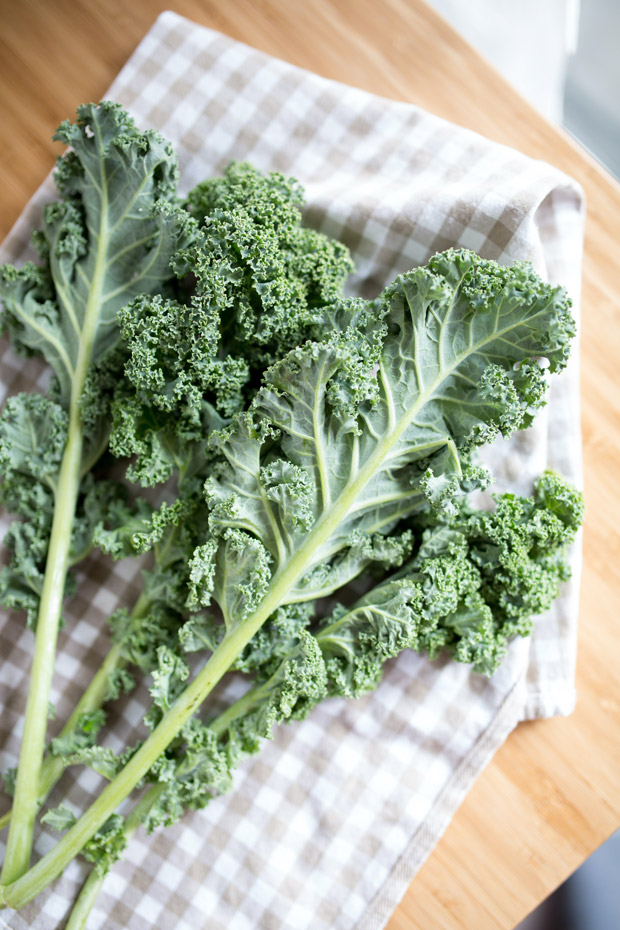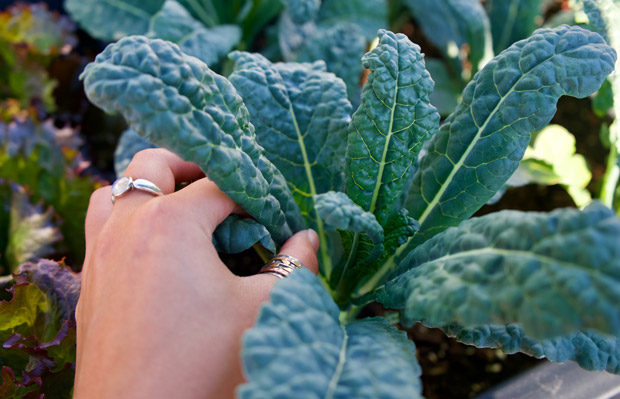Why you should grow kale over winter

If you’re a bit bored by cabbage for your winter garden, its ‘cousin’ kale is a great-looking, great-tasting alternative.
In Japanese gardens, kale is used as a winter ornamental due to its gorgeous looks and great frost-resistance. The prettiest pink, purple or red kale can be eaten, and it’s very good for you, and considered a ‘super food’ thanks to its high vitamin content (especially vitamin C), high calcium and other minerals, and high protein content.
Grows: anywhere, very frost-resistant, especially plain-leafed and dwarf varieties
Where: in full sun
When: autumn for late winter/spring crop, late spring for summer crop
Soil: does ok in any soil but does best in free-draining soil that was well fertilised with manure or compost the previous season
Watering: water during dry periods
Pests & diseases: slugs and snails, white butterflies, aphids
Harvest: matures 6-8 weeks after germination depending on variety, cut and come again with young leaves, gets sweeter after a frost
Uses: cut out stalks as they tend to be chewy. Excellent raw or cooked, great for stir fries, can be substituted for cabbage in any recipe. Can be frozen once blanched, but doesn’t store fresh for long periods in the fridge. When cooking, sauté or boil until bright green but not beyond or it over-cooks.
Jane’s tip: apparently, putting fresh kale leaves in the freezer overnight makes them taste sweeter.
KALE VARIETIES TO TRY

1. Red Russian
Gorgeous-looking heritage kale with frilly purple-veined, blue-green leaves tinged in red-purple, very frost resistant says Kay Baxter of Koanga Institute.
2. Blue Ridge F1
Dark blue leaves with ruffles, good for steaming or stir fry, cut and come again or harvest all at once, very disease-resistant says Geoff from Kings Seeds.
3. Flowering Kale
Stunning feature garden plant for winter with hues of pink-purple, edged in ruffles, however totally edible and maintenance-free say Egmont Seeds.
WHAT TO SOW

Zone 1: Tropical only
Marrows, melons, pumpkin, squash, sweet corn, zucchini.
Zone 2: Subtropical and tropical
Asparagus (crowns), climbing and dwarf beans, beetroot, broad beans, broccoli, cabbage, carrots, chicory, Chinese cabbages, kale, kohlrabi, herbs, leeks, lettuce, mustard, onions, parsnips, peas (climbing & dwarf), potatoes, radishes, rhubarb (seed), salsify, shallots, silverbeet, spinach, spring onions, swedes, turnips.
Zone 3: Temperature
Artichokes (suckers), broad beans, broccoli, cabbage, cress, kale, lettuce, mustard, onions, peas (climbing and dwarf), radishes, shallots, spinach.
Zone 3: Cold
Cress, lettuce, kale, mustard, onions, shallots, spinach.
TIPS
1. Kale for harvest should be a fresh green colour with moist, crisp leaves.
2. Remove any thick stems on the kale before you start cooking as they can be a little tough.
3. Kale can be substituted for cabbage or spinach, and makes a great dish when sautéed with garlic, a little soy and a sprinkling of chopped roasted nuts.
Recipe: Shredded Kale with Sultanas and Almonds
INGREDIENTS
25g butter
200g kale, shredded
4 tbsp dry white wine
75g sultanas
50g flaked almonds
2 Tbsp crème fraiche
METHOD
Heat the butter in a wok or large frying pan. Add the kale and stir-fry for 3 minutes. Add the wine and season well. Reduce the heat, cover and cook gently for 5 minutes until the kale is tender. Stir in the sultanas, almonds and crème fraiche and stir-fry for a further minute. Serve with a hearty stew.
MORE HERE
The 10 best lettuces for the healthiest 365-day salad supply
Recipe: Garden Greens (silverbeet, beetroot greens or spinach) & Feta Filo Pie
Love this story? Subscribe now!
 This article first appeared in NZ Lifestyle Block Magazine.
This article first appeared in NZ Lifestyle Block Magazine.
